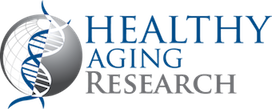
Healthy Aging Research
Open Access
ISSN: 2261-7434

ISSN: 2261-7434
Perspective - (2024)Volume 13, Issue 3
Aging, a complex and multifaceted process, is influenced by a many factors, with genetics and epigenetics playing pivotal roles. Understanding how these two domains interact provides valuable insights into the mechanisms behind aging and offers potential pathways for enhancing health and longevity.
Genetics: The blueprint of aging
Each gene encodes instructions for synthesizing proteins, which perform a wide array of functions essential for bodily processes. Research into genetics has identified several important areas where genes influence aging:
Longevity genes: Some genes are linked to increased lifespan and better health in old age. FOXO3 plays a key role in cellular stress resistance, metabolic regulation, and DNA repair, all vital for maintaining cellular health as we age.
Genetic variants and disease risk: Genetic predispositions to agerelated diseases, such as Alzheimer’s disease, cardiovascular conditions, and cancer, are well-established. For example, variants in the APOE gene, which affects cholesterol metabolism, are linked to an increased risk of Alzheimer’s. These genetic factors illustrate how specific variations can influence disease susceptibility.
DNA repair mechanisms: DNA repair processes are necessary for preserving genomic stability.
Genetic interventions: Advances in gene editing technologies, such as CRISPR-Cas9, offer the potential to correct age-related genetic defects. These technologies hold potential for developing treatments aimed at mitigating genetic issues that contribute to aging.
Epigenetics: The regulation of gene expression
Instead, epigenetic modifications influence how genes are activated or silenced, affecting cellular behavior and aging. Key aspects of epigenetics in aging include:
Epigenetic modifications: Common forms of epigenetic modification include DNA methylation, histone modification, and interactions with non-coding RNAs. DNA methylation, which adds methyl groups to DNA, usually represses gene expression.
Epigenetic clocks: These are molecular tools used to estimate biological age based on DNA methylation patterns.
Environmental and lifestyle influences: Environmental factors and lifestyle choices, such as diet, stress, and exposure to toxins, impact epigenetic modifications. For example, compounds in foods like polyphenols and folate can alter DNA methylation patterns, potentially affecting aging and disease risk.
Reversibility of epigenetic changes: Unlike genetic mutations, which are permanent, epigenetic modifications can be reversible. Interventions such as diet, exercise, and pharmacological treatments can potentially modulate these epigenetic changes, offering avenues for rejuvenation and health improvement.
Interplay between genetics and epigenetics
The relationship between genetics and epigenetics is intricate and interconnected. Genetic variations can influence epigenetic modifications, and epigenetic changes can affect gene expression. This dynamic interplay emphasises how genetic predispositions and epigenetic factors collectively shape aging and disease risk:
Genetic influence on epigenetics: Genetic predispositions can impact the establishment and maintenance of epigenetic marks. Understanding how genetic variations affect epigenetic regulation can reveal how genetic risks contribute to aging and disease.
Epigenetic regulation of genes: Epigenetic modifications can regulate the expression of genes involved in aging and age-related diseases. Changes in these modifications can alter gene function and contribute to aging processes.
Environmental interactions: Environmental and lifestyle factors that affect epigenetic modifications also interact with genetic predispositions, influencing overall health and aging. Research into these interactions can provide insights into how environmental and genetic factors converge to impact aging.
Researchers are increasingly exploring the intersection of genetics and epigenetics to gain a more comprehensive understanding of aging. By studying how genetic variants influence epigenetic regulation and vice versa, scientists can uncover new insights into the aging process and develop personalized approaches to promote healthy aging.
while genetics provides the foundational blueprint for aging, epigenetics offers insights into the regulation of gene expression over time. Together, these fields enhance our understanding of aging and clear the route for innovative strategies to improve health and extend lifespan.
Citation: Siyang W (2024). Interwoven Pathways: Genetic Predispositions and Epigenetic Modifications Shape the Dynamics of Aging. Healthy Aging Res. 13:211.
Received: 20-Aug-2024, Manuscript No. HAR-24-34161; Editor assigned: 22-Aug-2024, Pre QC No. HAR-24-34161(PQ); Reviewed: 02-Sep-2024, QC No. HAR-24-34161; Revised: 12-Sep-2024, Manuscript No. HAR-24-34161(R); Published: 19-Sep-2024 , DOI: 10.35248/2261-7434.24.13.211
Copyright: © 2024 Siyang W. This is an open-access article distributed under the terms of the Creative Commons Attribution License, which permits unrestricted use, distribution, and reproduction in any medium, provided the original author and source are credited.